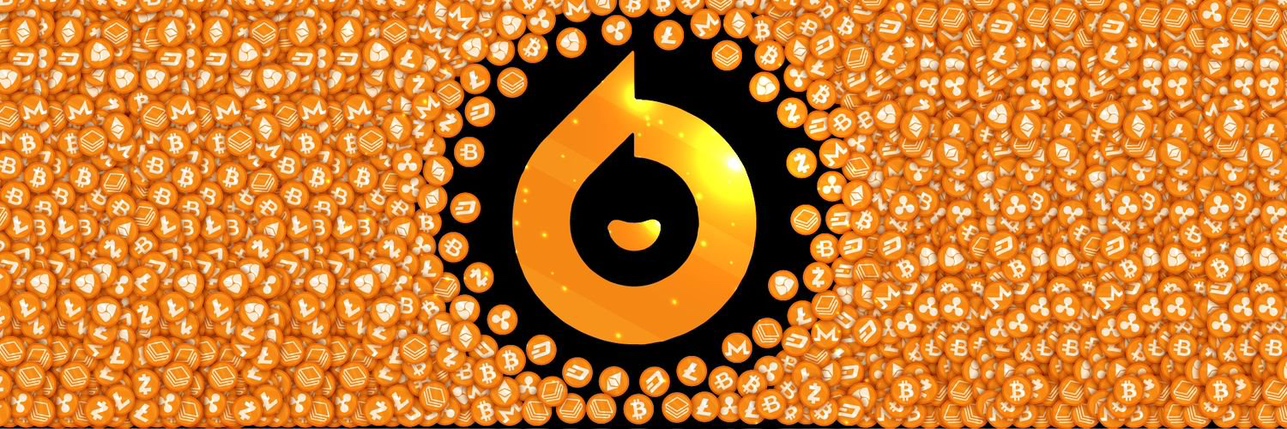
Gas KursGAS
GAS/EUR Kursrechner
Live Gas Kurs heute in EUR
Glauben Sie, dass der Kurs von Gas heute steigen oder fallen wird?
Gas Marktinformationen
Über Gas (GAS)
Was ist GAS?
GAS, gemeinhin als NEOGas bezeichnet, ist ein integraler Bestandteil der NEO-Blockchain, einer Plattform, die oft als Chinas Antwort auf Ethereum bezeichnet wird. Das NEO-Netzwerk ist einzigartig in seiner Einführung eines dualen Token-Mechanismus, der darauf abzielt, die Governance-Rechte von den Netzwerknutzungsrechten zu trennen. Während NEO den Governance-Aspekt darstellt, ist GAS der operative Token, der verschiedene Aktivitäten im NEO-Netzwerk ermöglicht. Ähnlich wie das Konzept von "Gas" auf der Ethereum-Plattform wird GAS im NEO-Ökosystem verwendet, um für eine Vielzahl von Operationen zu bezahlen, was es für das reibungslose Funktionieren des Netzwerks unerlässlich macht.
Die Vision des NEO-Netzwerks von einer "Smart Economy" wird durch sein duales Token-System untermauert. Mit einem Gesamtangebot von 100 Millionen Stück ermöglicht der NEO-Token den Haltern die Teilnahme an der Governance, indem sie für das Neo-Komitee stimmen, das den Betrieb der Blockchain überwacht. Auf der anderen Seite wird GAS, das mit jedem verarbeiteten Block generiert wird, zur Bezahlung von Transaktionsgebühren und für den Einsatz von Smart Contracts im NEO-Netzwerk verwendet. Dieses duale System stellt sicher, dass die Governance dezentralisiert und das Netz agil und effizient bleibt.
Ressourcen
Offizielle Dokumente: https://docs.neo.org/docs/en-us/index.html
Offizielle Website: https://neo.org/
Wie funktioniert GAS?
Das NEO-Netzwerk berechnet GAS für den Betrieb und die Speicherung von Tokens und Smart Contracts. Dieser Mechanismus verhindert den möglichen Missbrauch von Node-Ressourcen. Die eingenommenen Systemgebühren werden verbrannt, was GAS einen deflationären Aspekt verleiht. In der Zwischenzeit werden die Netzgebühren an die Konsens-Nodes umverteilt, so dass diese einen wirtschaftlichen Anreiz bieten, die Integrität und Effizienz des Netzes aufrechtzuerhalten.
GAS wird in einer vom Netz festgelegten Rate produziert. So werden beispielsweise in jedem Block 5 GAS-Token generiert, die in unterschiedlichen Anteilen verteilt werden. Der größte Teil des GAS geht an die Wähler und belohnt sie für ihre aktive Rolle bei der Netzwerkverwaltung. Dieses System bietet nicht nur Anreize zur Teilnahme, sondern sorgt auch dafür, dass diejenigen, die zur Entscheidungsfindung des Netzwerks beitragen, angemessen belohnt werden.
Was ist GAS Token?
GAS ist einer der beiden Tokens, die von der Neo Foundation geschaffen wurden. Seine Hauptfunktion besteht darin, als Utility-Token für das NEO-Netzwerk zu dienen. GAS wird verwendet, um Transaktionsgebühren und den Einsatz von Smart Contracts zu bezahlen. Im Gegensatz zu NEO, das unteilbar ist, ist GAS teilbar, wodurch es sich für Mikrotransaktionen im Netz eignet.
Durch das Halten von NEO in bestimmten Wallets können die Nutzer GAS als eine Art Dividende erhalten. Dieser Staking-Mechanismus bietet NEO-Inhabern eine zusätzliche Renditechance und macht das NEO-Ökosystem sowohl für die Beteiligung an der Governance als auch für die Generierung von passivem Einkommen attraktiv.
Wodurch wird der Preis von GAS bestimmt?
In der sich ständig weiterentwickelnden Web3-Landschaft wird der Preis von GAS, dem Dreh- und Angelpunkt innerhalb des NEO-Netzwerks, von einer Vielzahl von Faktoren beeinflusst, die in der Blockchain-Dynamik und den externen Marktbedingungen begründet sind. Wie bei allen Assets spielt das Prinzip von Angebot und Nachfrage eine entscheidende Rolle bei der Bestimmung des Preises von GAS. Mit der zunehmenden Verbreitung von Kryptowährungen und der steigenden Attraktivität des NEO-Netzwerks kann die Nachfrage nach GAS erheblichen Schwankungen unterliegen. Kryptowährungs-Charts und Kryptowährungsanalysen bieten Einblicke in diese Veränderungen und zeigen oft die Auswirkungen der neuesten Nachrichten auf, von Änderungen der Kryptowährungsvorschriften bis hin zu den neuesten Entwicklungen im Blockchain-Bereich.
Die Marktvolatilität, ein Markenzeichen der Kryptowährungswelt, erschwert die Vorhersage von Kryptowährungspreisen zusätzlich. Faktoren wie die Risiken von Kryptowährungen, Sicherheitsbedenken und die allgemeinen Trends bei Kryptowährungen können zu plötzlichen und dramatischen Kursschwankungen führen. Wenn beispielsweise Token wie GAS als beste Krypto-Investition für das Jahr 2023 und darüber hinaus angepriesen werden, könnte dies die Nachfrage in die Höhe treiben und den Preis beeinflussen. Während die Mechanik des NEO-Netzwerks und die Blockchain-Prinzipien den Grundwert von GAS bestimmen, bestimmen externe Faktoren, von der Regulierung von Kryptowährungen bis hin zu den neuesten Entwicklungen im Web3-Bereich, seinen Marktpreis.
AI-Analysebericht über Gas
Gas Kursverlauf (EUR)
 Niedrigster Kurs
Niedrigster Kurs Höchster Kurs
Höchster Kurs 
Was ist der höchste Kurs von Gas?
Was ist der niedrigste Kurs von Gas?
Gas Kursprognose
Wann ist ein guter Zeitpunkt, um GAS zu kaufen? Sollte ich GAS jetzt kaufen oder verkaufen?
Trendige Aktionen
Globale Gas Kurse
Wie man Gas(GAS) kauft

Erstellen Sie Ihr kostenloses Bitget-Konto

Verifizieren Sie Ihr Konto

GAS in EUR konvertieren
FAQ
Was ist der aktuelle Kurs von Gas?
Wie hoch ist das 24-Stunden-Trading-Volumen von Gas?
Was ist das Allzeithoch von Gas?
Kann ich Gas auf Bitget kaufen?
Kann ich mit Investitionen in Gas ein regelmäßiges Einkommen erzielen?
Wo kann ich Gas mit der niedrigsten Gebühr kaufen?
Kurse ähnlicher Kryptowährungen
Wo kann ich Gas (GAS) kaufen?
Videobereich - schnelle Verifizierung, schnelles Trading

GAS/EUR Kursrechner
GAS Ressourcen
Tags:
Bitget Insights




Traden
Earn
GAS/USDT
SpotGAS/USDT
MarginGAS/USDT
USDT-M FuturesKurse neu gelisteter Coins auf Bitget








